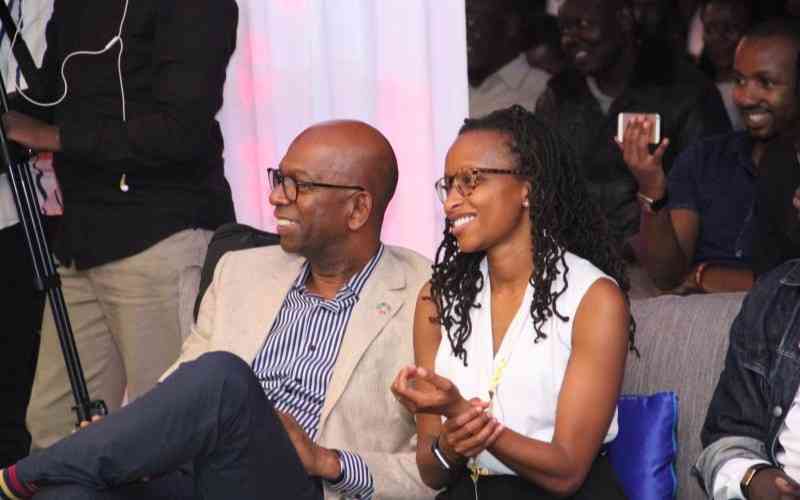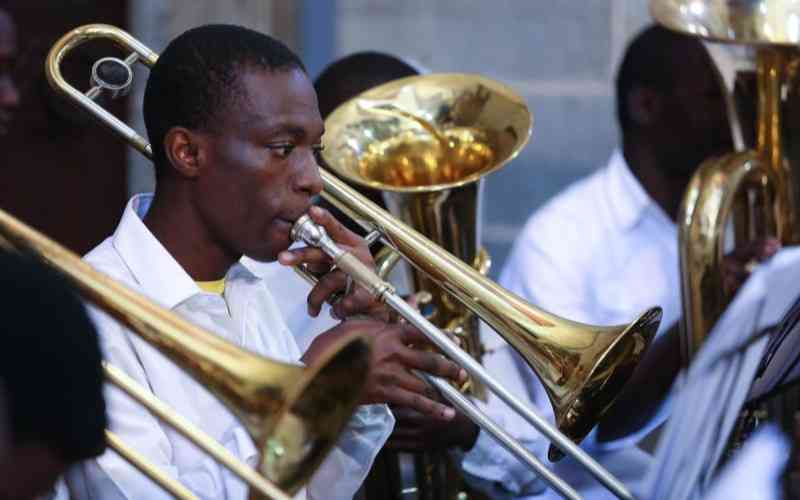
Over the years, Wambui Collymore has loved what people remember about her late husband, Bob Collymore, when they speak to her.
“It is the gift that keeps giving, to meet people who knew him in some capacity or have met him and they have an interesting story about him,” she says.
One of the things that people certainly remember him for was his love of Jazz and Classical music. He was the CEO of Safaricom when the Safaricom Jazz Festival came to life.
On July 1, the fourth anniversary of his passing, the Bob Collymore International Jazz Festival was held at the Carnivore Grounds.
Wambui is its festival director, and it is the very first Jazz festival held by the Bob Collymore Foundation. Wambui says it has been a long time coming, and she refers to the festival as an opportunity to showcase great Jazz talent.
“A lot of it has been growing over the last, I would say nine years or so, and it falls upon the background of a history of Jazz from the 1960s in Kenya,” she says.
Placing the festival in the month he passed on might seem intentional, but Wambui explains it differently.
“Some things happen by coincidence but sometimes they also happen because that is how the universe intends it. We have been wanting to do a Jazz festival for a while. And the date that we could get was the first of July, so we thought, “Well, why not? What better way to celebrate Bob than to have an opportunity to gather around good music and community?” she says.
- Down memory lane with TPOK Jazz Orchestra
Keep Reading
While the festival was held in July this year to celebrate Bob Collymore and his legacy, Wambui says from next year the festival will be held annually in February. International artistes will also be performing at the festival.
“We are working with the diplomatic community here to create partnerships that will bring artistes from countries like Germany, Belgium, Italy, and the US. That is what gives us the international component.
"That is why we are called the BC International Jazz Festival. It is an opportunity for our musicians to learn and for them to also teach those organisations that are coming in,” she says.
International Jazz musicians have been working with Kenyan musicians since they were introduced by Bob Collymore to Ghetto Classics, one of the festival’s partners.
Ghetto Classics was founded by Elizabeth Njoroge and is a musical orchestra based in Korogocho slum, Nairobi. It is run by Art of Music, which aims to transform the lives of children in Nairobi’s informal settlements, as well as in Nakuru, Mombasa and Kisumu.

International acts such as Grammy-award-winning artistes Kirk Whalum, Branford Marsalis, and Salif Keïta have performed with Ghetto Classics. Many of them have remained in touch with them, providing instruments while others continue to conduct masterclasses with them.
“We have had conversations with some of those musicians who appeared in the Jazz festivals when Bob was running them and a number of them want to come back. What they say is that there is an impact in the work that they do here.
"There is a welcoming community. The fact that we have such a large Jazz audience is not a small issue, because most international Jazz audiences do not even pull the crowds that we have been able to in the last number of years. So Kenya is receptive. We are hungry for good stuff,” says Wambui.
She has an even bigger vision for the festival, where she envisions it becoming a multi-country affair and with several nations’ Jazz festivals working together.
“What we are also thinking about is multi-city. So you do not just have it in a room, but you also have it in Kampala. One of the things that I dream about is that in five years, this Jazz festival has got a year-long roster, so in January, you can start in Morocco, February, you can go to Cape Town and just examples of ways of which we can collaborate, so that it is not just based in Nairobi. It allows us to travel across the continent as well…. We want to get on to the map in the roster of what is the Jazz world,” she says.
For Wambui, what she does as an artiste and what she is doing in the Jazz world is all connected, as she does not create artworks in silence. She often does it with music playing in the background, and usually, that music is Jazz or has elements of Jazz in it.
“I particularly like African Jazz musicians - Salif Keïta, Fatoumata Diawara – I do not see a division between the two, so it is not too much of a leap for me as an artiste to envision my surrounding to be that of music. So they are not unrelated,” she says.
Wambui is an installation artiste, so she expresses herself in artwork, mostly composed of everyday objects.
Since Bob was diagnosed with cancer until his passing though, she found that it was easier to express herself in poetry than it was to create artwork.
That poetry and her feelings from that particular time were immortalsed in her most recent installation, All My Venus Days, which opened in February 2022. The installation was about the processing of grief.
“I wanted to talk about the process through time and how time is an important element of grieving,” she says.
One day on the planet Venus lasts 243 Earth days, and this perception of time is what the name of the installation was based on.
It was influenced by the work of Taiwanese-American artiste, Tehching Hsieh, who documents time through this process.
“The reason it was called All My Venus Days is because Venus has got a large number of days in comparison to Earth…. and it feels like that with grief. Sometimes it is a day, but then it feels stretched,” she says.
The art pieces in the installation were artworks that were photographs of Bob's belongings and represented a time. She explains that it was a capture of a space she knew would eventually change.
“Because you have to pack up those things. You have to empty those shelves. So I captured that moment, what it was, to be in a space where he had just been. And many of the other art pieces in that space were captures of moments,” she says.
The installation also had a clothing rack which had shirts on it, embroidered with her poetry.
“The shirts that I had there are art pieces. So those shirts have got poetry on them that I was able to write. Embroidered poetry. They are symbolic of wifely duties. Because women traditionally are supposed to be the ones who sew the buttons and do all of that. So it was I guess attributed to that aspect of wifely duties,” she says.
She explains that in that way, she was able to incorporate her first love, poetry, into something that reminded her of somebody she loved.
“It also allows for healing because you then have placed your time and thoughts, and you have removed or excavated, which then allows you to have space to have new thoughts or new feelings,” she says.
The work on the installation began in 2018 and was related to the immigrant crisis and how, she explains as humans, we now consume grief on our mobile phones.
“So you read a story. For example, about the Turkish little boy who washed up on the Greek shores. And you have a choice. You can either forward it, archive it or delete it, but you consume it. I was exploring ways in which as humans we have started to look at grief as normal as breathing, without really understanding its place and how it helps us understand the world, and again, about being human,” she says.
When her husband passed on, the installation became central to the expression of her grief, documenting it in a very personal way.
“It was a discussion of what it is to lose someone very important to you and ways in which we try to remember or memorialise that person. So for me, art is an expression and a way in which I talk about how I am feeling or what I am thinking or a way in which I look at the world,” she says.
 The Standard Group Plc is a multi-media organization with investments in media
platforms spanning newspaper print
operations, television, radio broadcasting, digital and online services. The
Standard Group is recognized as a
leading multi-media house in Kenya with a key influence in matters of national and
international interest.
The Standard Group Plc is a multi-media organization with investments in media
platforms spanning newspaper print
operations, television, radio broadcasting, digital and online services. The
Standard Group is recognized as a
leading multi-media house in Kenya with a key influence in matters of national and
international interest.









